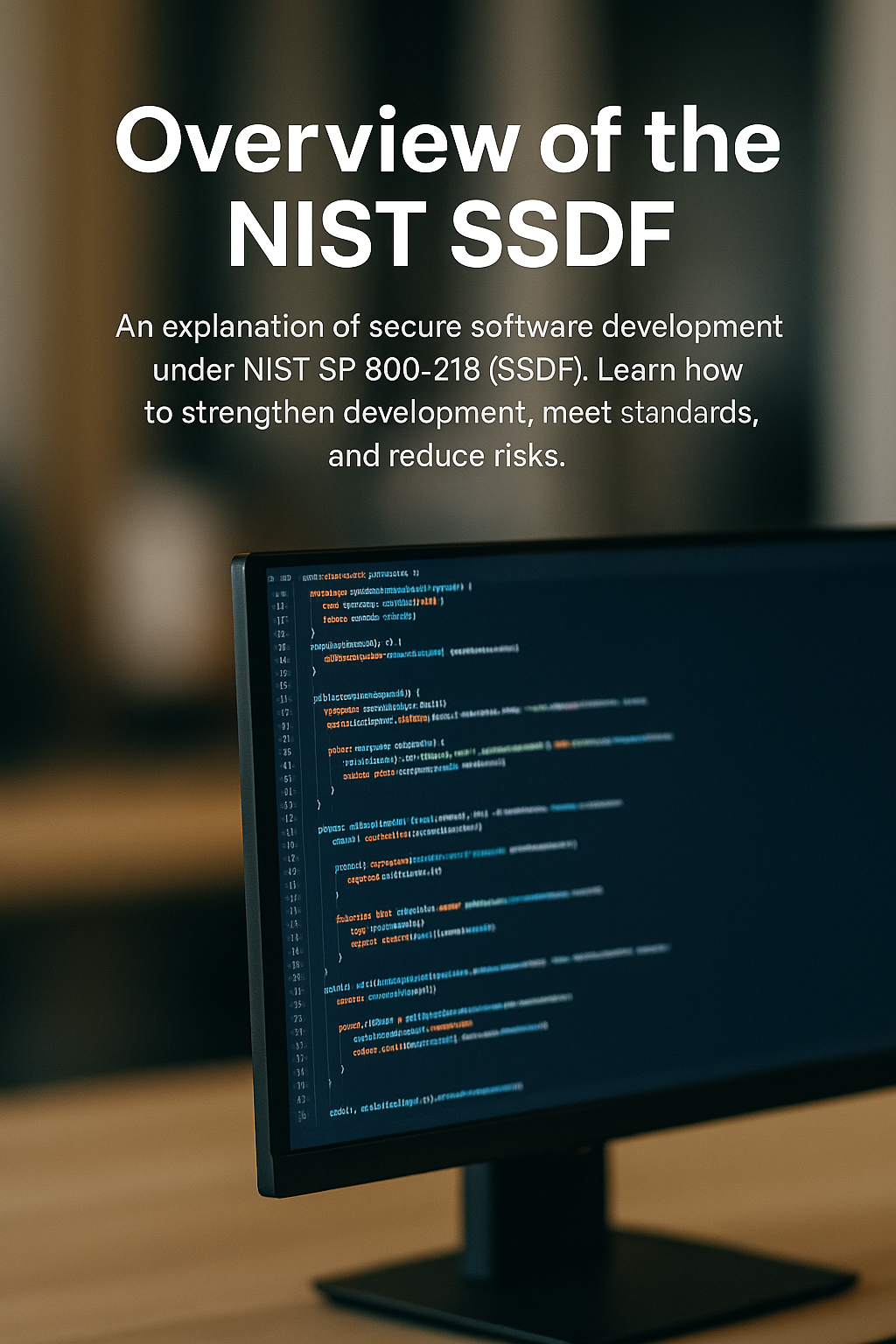An explanation of secure software development under NIST SP 800-218 (SSDF). Learn how to strengthen development, meet standards, and reduce risks.
The National Institute of Standards and Technology (NIST) published the Secure Software Development Framework (SSDF) in Special Publication 800-218. This framework gives organizations a structured approach to improving software security throughout the development lifecycle.
Structure of the SSDF
The SSDF aims to reduce the number and severity of vulnerabilities in released software, minimize the impact of existing vulnerabilities, and address security considerations in all phases of the software lifecycle. To achieve these goals, the framework is divided into four main areas, each containing specific practices and associated tasks.
Prepare the organization (PO)
The first area, “Prepare the organization,” lays the foundation for secure software development. It includes defining clear security requirements, assigning roles and responsibilities, and implementing supporting tools. Training personnel on software security and establishing a secure development environment are also central elements. These measures create the organizational basis on which all further security efforts are built.
Protect the software (PS)
The second area, “Protect the software,” focuses on protecting the software product itself. This begins with safeguarding source code against unauthorized access and tampering and extends to implementing secure release mechanisms and securely archiving software versions. These practices ensure the integrity of the software product throughout the development process and beyond.
Produce well-secured software (PW)
In the third area, “Produce well-secured software,” security is integrated directly into the development process. From threat modeling during the design phase to continuous code reviews and comprehensive security testing, and on to secure configuration of the software, all aspects of development are considered from a security perspective. Documenting security aspects for end users and using automation tools to scale security practices round out this comprehensive approach.
Respond to vulnerabilities (RV)
The fourth area, “Respond to vulnerabilities,” deals with managing security issues after software release. It covers effective identification, assessment, and prioritization of vulnerabilities as well as thorough analysis to prevent similar problems in the future. This proactive approach to vulnerability remediation contributes significantly to the continuous improvement of software security.
Interaction with standards and regulations
A particularly valuable aspect of the SSDF is its linkage to various standards, industry-specific benchmarks, and regulations. For each requirement, the SSDF provides specific references to relevant regulatory frameworks. Important cross-references include among others:
- IEC 62443: An internationally recognized series of standards for the security of industrial automation and control systems.
- ISO 27034: A standard that provides guidelines for application security.
- OWASP Application Security Verification Standard (ASVS): A comprehensive catalog of security requirements and controls that serves as a benchmark for assessing the technical security of applications.
- Executive Order (EO) 14028: A U.S. directive aimed at improving the nation’s cybersecurity.
These linkages allow organizations to seamlessly integrate the SSDF into existing compliance efforts and ensure that software development not only follows NIST recommendations but also aligns with best practices and regulatory requirements.
Implementation of the SSDF
The SSDF is intentionally flexible to support different software development methods and environments. Organizations can select and adapt the practices that best match their specific needs and risks. Implementation should proceed incrementally, starting with the most critical practices.
The benefits of implementing the SSDF are manifold: improved software quality and security, cost savings through early detection and remediation of security issues, increased trust from customers and partners, better compliance with regulations and standards, and more efficient responses to security incidents.
However, implementation also brings challenges. These include the need for cultural change within the organization, training and upskilling personnel, integrating practices into existing development processes, selecting and deploying appropriate tools, and continuously improving and adapting the practices.
Conclusion
The NIST SSDF offers a comprehensive and flexible approach to improving software security. By implementing SSDF practices, organizations can strengthen their software development processes, reduce risks, and ultimately deliver more secure products. In an increasingly connected and software-dependent world, applying such frameworks is not just an option but a necessity for responsible software development.

